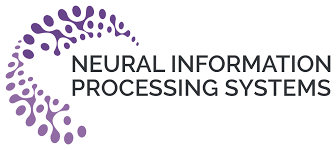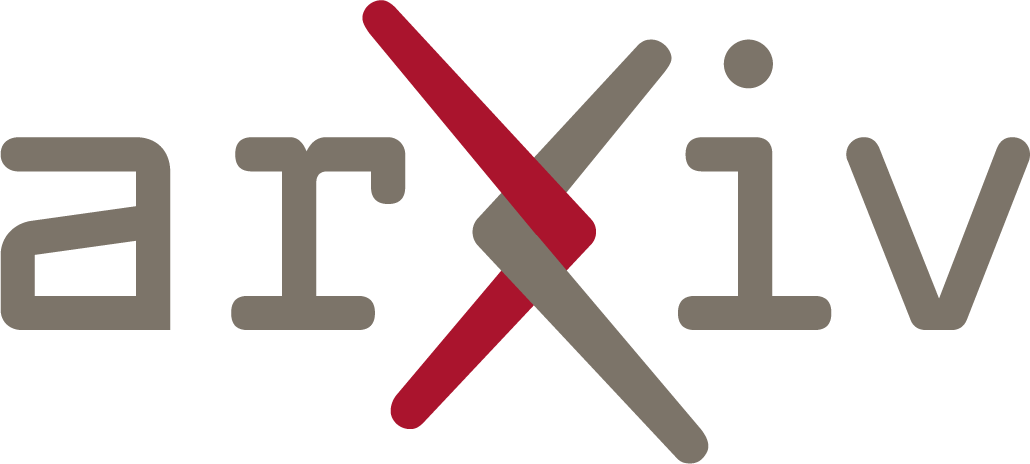2025

Securing Language Models Against Vulnerability Encoding
Rui Melo
ISSTA/FSE 2025 Joint Doctoral Symposium Published 2025
The integration of Large Language Models (LLMs) into software development workflows has transformed automated programming but introduced significant security challenges. LLMs often generate vulnerable code due to the insecure patterns present in training data, leading to the generation of code vulnerable to threats such as SQL injection, cross-site scripting, and buffer overflows. Existing mitigation strategies, including static and dynamic analysis tools and prompt engineering, are reactive rather than preventive. Recent advances in model training, such as fine-tuning and adversarial training, offer promising avenues for enhancing the security of LLM-generated code. This paper explores different methodologies and proposes an evaluation framework to embed security directly into AI-assisted programming. By integrating security into model training and assessment, we aim to establish a robust standard for secure AI-driven programming.
Securing Language Models Against Vulnerability Encoding
Rui Melo
ISSTA/FSE 2025 Joint Doctoral Symposium Published 2025
The integration of Large Language Models (LLMs) into software development workflows has transformed automated programming but introduced significant security challenges. LLMs often generate vulnerable code due to the insecure patterns present in training data, leading to the generation of code vulnerable to threats such as SQL injection, cross-site scripting, and buffer overflows. Existing mitigation strategies, including static and dynamic analysis tools and prompt engineering, are reactive rather than preventive. Recent advances in model training, such as fine-tuning and adversarial training, offer promising avenues for enhancing the security of LLM-generated code. This paper explores different methodologies and proposes an evaluation framework to embed security directly into AI-assisted programming. By integrating security into model training and assessment, we aim to establish a robust standard for secure AI-driven programming.
2024

SaulLM-54B & SaulLM-141B: Scaling Up Domain Adaptation for the Legal Domain
Pierre Colombo, Telmo Pires, Malik Boudiaf, Rui Melo, Dominic Culver, Sofia Morgado, Etienne Malaboeuf, Gabriel Hautreux, Johanne Charpentier, Michael Desa
NeurIPS A* 2024
In this paper, we introduce SaulLM-54B and SaulLM-141B, two large language models (LLMs) tailored for the legal sector. These models, which feature architectures of 54 billion and 141 billion parameters, respectively, are based on the Mixtral architecture. The development of SaulLM-54B and SaulLM-141B is guided by large-scale domain adaptation, divided into three strategies: (1) the exploitation of continued pretraining involving a base corpus that includes over 540 billion of legal tokens, (2) the implementation of a specialized legal instruction-following protocol, and (3) the alignment of model outputs with human preferences in legal interpretations. The integration of synthetically generated data in the second and third steps enhances the models' capabilities in interpreting and processing legal texts, effectively reaching state-of-the-art performance and outperforming previous open-source models on LegalBench-Instruct. This work explores the trade-offs involved in domain-specific adaptation at this scale, offering insights that may inform future studies on domain adaptation using strong decoder models. Building upon SaulLM-7B, this study refines the approach to produce an LLM better equipped for legal tasks. We are releasing base, instruct, and aligned versions on top of SaulLM-54B and SaulLM-141B under the MIT License to facilitate reuse and collaborative research.
SaulLM-54B & SaulLM-141B: Scaling Up Domain Adaptation for the Legal Domain
Pierre Colombo, Telmo Pires, Malik Boudiaf, Rui Melo, Dominic Culver, Sofia Morgado, Etienne Malaboeuf, Gabriel Hautreux, Johanne Charpentier, Michael Desa
NeurIPS A* 2024
In this paper, we introduce SaulLM-54B and SaulLM-141B, two large language models (LLMs) tailored for the legal sector. These models, which feature architectures of 54 billion and 141 billion parameters, respectively, are based on the Mixtral architecture. The development of SaulLM-54B and SaulLM-141B is guided by large-scale domain adaptation, divided into three strategies: (1) the exploitation of continued pretraining involving a base corpus that includes over 540 billion of legal tokens, (2) the implementation of a specialized legal instruction-following protocol, and (3) the alignment of model outputs with human preferences in legal interpretations. The integration of synthetically generated data in the second and third steps enhances the models' capabilities in interpreting and processing legal texts, effectively reaching state-of-the-art performance and outperforming previous open-source models on LegalBench-Instruct. This work explores the trade-offs involved in domain-specific adaptation at this scale, offering insights that may inform future studies on domain adaptation using strong decoder models. Building upon SaulLM-7B, this study refines the approach to produce an LLM better equipped for legal tasks. We are releasing base, instruct, and aligned versions on top of SaulLM-54B and SaulLM-141B under the MIT License to facilitate reuse and collaborative research.

SaulLM-7B: A pioneering Large Language Model for Law
Pierre Colombo, Telmo Pessoa Pires, Malik Boudiaf, Dominic Culver, Rui Melo, Caio Corro, Andre F. T. Martins, Fabrizio Esposito, Vera Lúcia Raposo, Sofia Morgado, Michael Desa
arXiv 2024
In this paper, we introduce SaulLM-7B, a large language model (LLM) tailored for the legal domain. With 7 billion parameters, SaulLM-7B is the first LLM designed explicitly for legal text comprehension and generation. Leveraging the Mistral 7B architecture as its foundation, SaulLM-7B is trained on an English legal corpus of over 30 billion tokens. SaulLM-7B exhibits state-of-the-art proficiency in understanding and processing legal documents. Additionally, we present a novel instructional fine-tuning method that leverages legal datasets to further enhance SaulLM-7B's performance in legal tasks. SaulLM-7B is released under the MIT License.
SaulLM-7B: A pioneering Large Language Model for Law
Pierre Colombo, Telmo Pessoa Pires, Malik Boudiaf, Dominic Culver, Rui Melo, Caio Corro, Andre F. T. Martins, Fabrizio Esposito, Vera Lúcia Raposo, Sofia Morgado, Michael Desa
arXiv 2024
In this paper, we introduce SaulLM-7B, a large language model (LLM) tailored for the legal domain. With 7 billion parameters, SaulLM-7B is the first LLM designed explicitly for legal text comprehension and generation. Leveraging the Mistral 7B architecture as its foundation, SaulLM-7B is trained on an English legal corpus of over 30 billion tokens. SaulLM-7B exhibits state-of-the-art proficiency in understanding and processing legal documents. Additionally, we present a novel instructional fine-tuning method that leverages legal datasets to further enhance SaulLM-7B's performance in legal tasks. SaulLM-7B is released under the MIT License.
2023

A Semantic Search System for the Supremo Tribunal de Justiça
Rui Melo, Pedro A. Santos, João Dias
EPIA 2023
Many information retrieval systems use lexical approaches to retrieve information. Such approaches have multiple limitations, and these constraints are exacerbated when tied to specific domains, such as the legal one. Large language models, such as BERT, deeply understand a language and may overcome the limitations of older methodologies, such as BM25. This work investigated and developed a prototype of a Semantic Search System to assist the Supremo Tribunal de Justiça (Portuguese Supreme Court of Justice) in its decision-making process. We built a Semantic Search System that uses specially trained BERT models (Legal-BERTimbau variants) and a Hybrid Search System that incorporates both lexical and semantic techniques by combining the capabilities of BM25 and the potential of Legal-BERTimbau. In this context, we obtained a increase on the discovery metric when compared to BM25 for the first query result. This work also provides information on the most relevant techniques for training a Large Language Model adapted to Portuguese jurisprudence and introduces a new technique of Metadata Knowledge Distillation.
A Semantic Search System for the Supremo Tribunal de Justiça
Rui Melo, Pedro A. Santos, João Dias
EPIA 2023
Many information retrieval systems use lexical approaches to retrieve information. Such approaches have multiple limitations, and these constraints are exacerbated when tied to specific domains, such as the legal one. Large language models, such as BERT, deeply understand a language and may overcome the limitations of older methodologies, such as BM25. This work investigated and developed a prototype of a Semantic Search System to assist the Supremo Tribunal de Justiça (Portuguese Supreme Court of Justice) in its decision-making process. We built a Semantic Search System that uses specially trained BERT models (Legal-BERTimbau variants) and a Hybrid Search System that incorporates both lexical and semantic techniques by combining the capabilities of BM25 and the potential of Legal-BERTimbau. In this context, we obtained a increase on the discovery metric when compared to BM25 for the first query result. This work also provides information on the most relevant techniques for training a Large Language Model adapted to Portuguese jurisprudence and introduces a new technique of Metadata Knowledge Distillation.